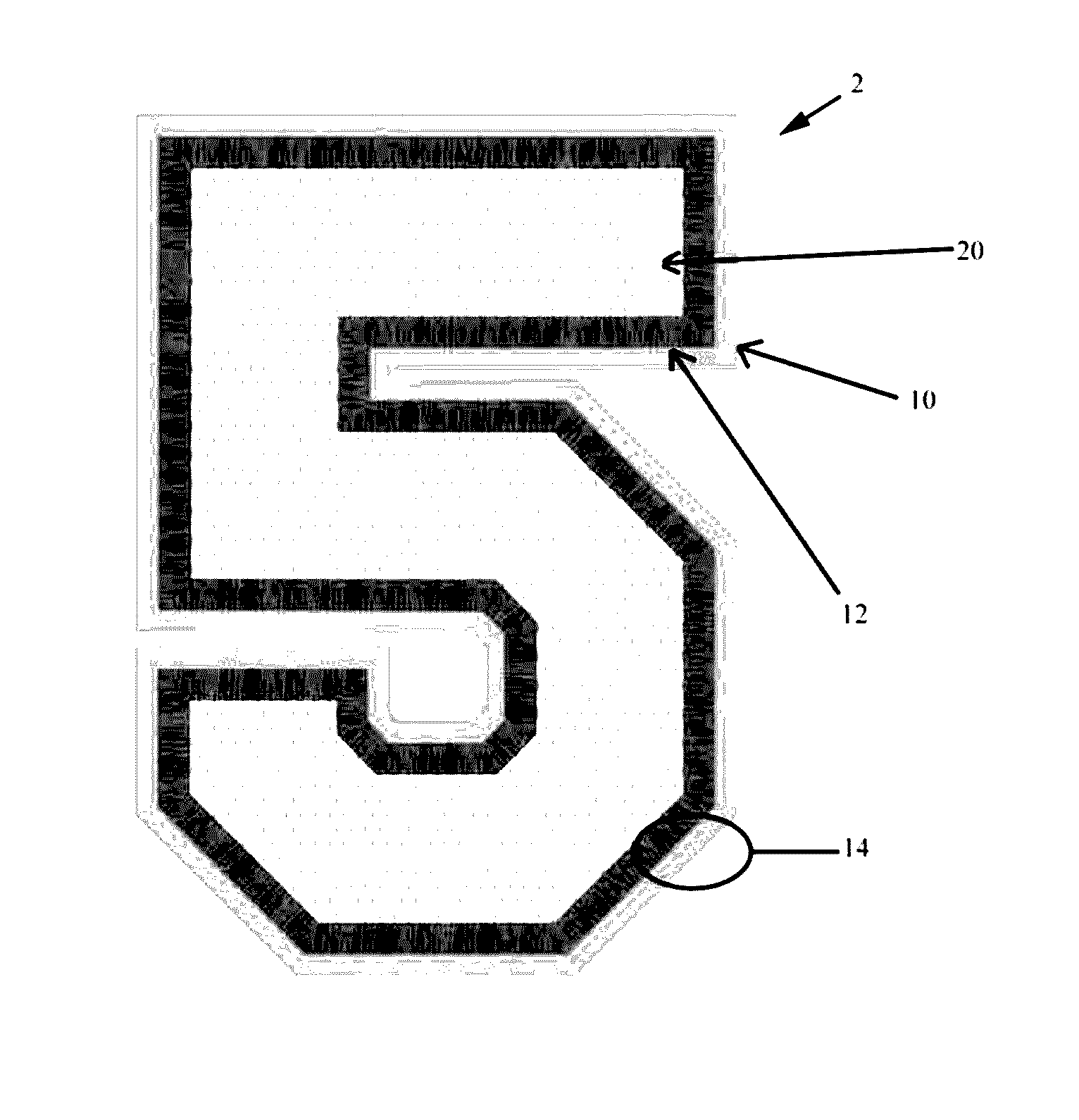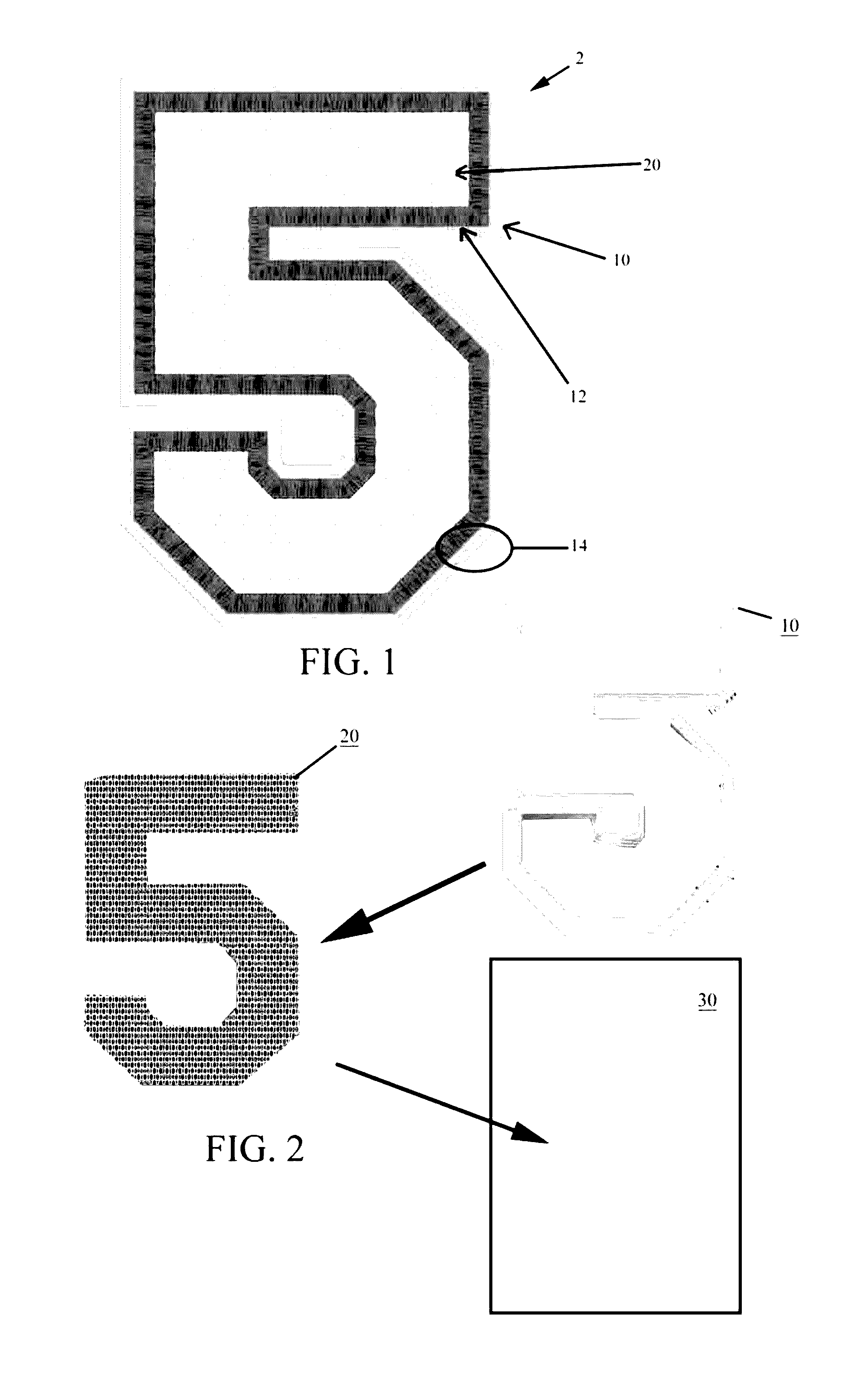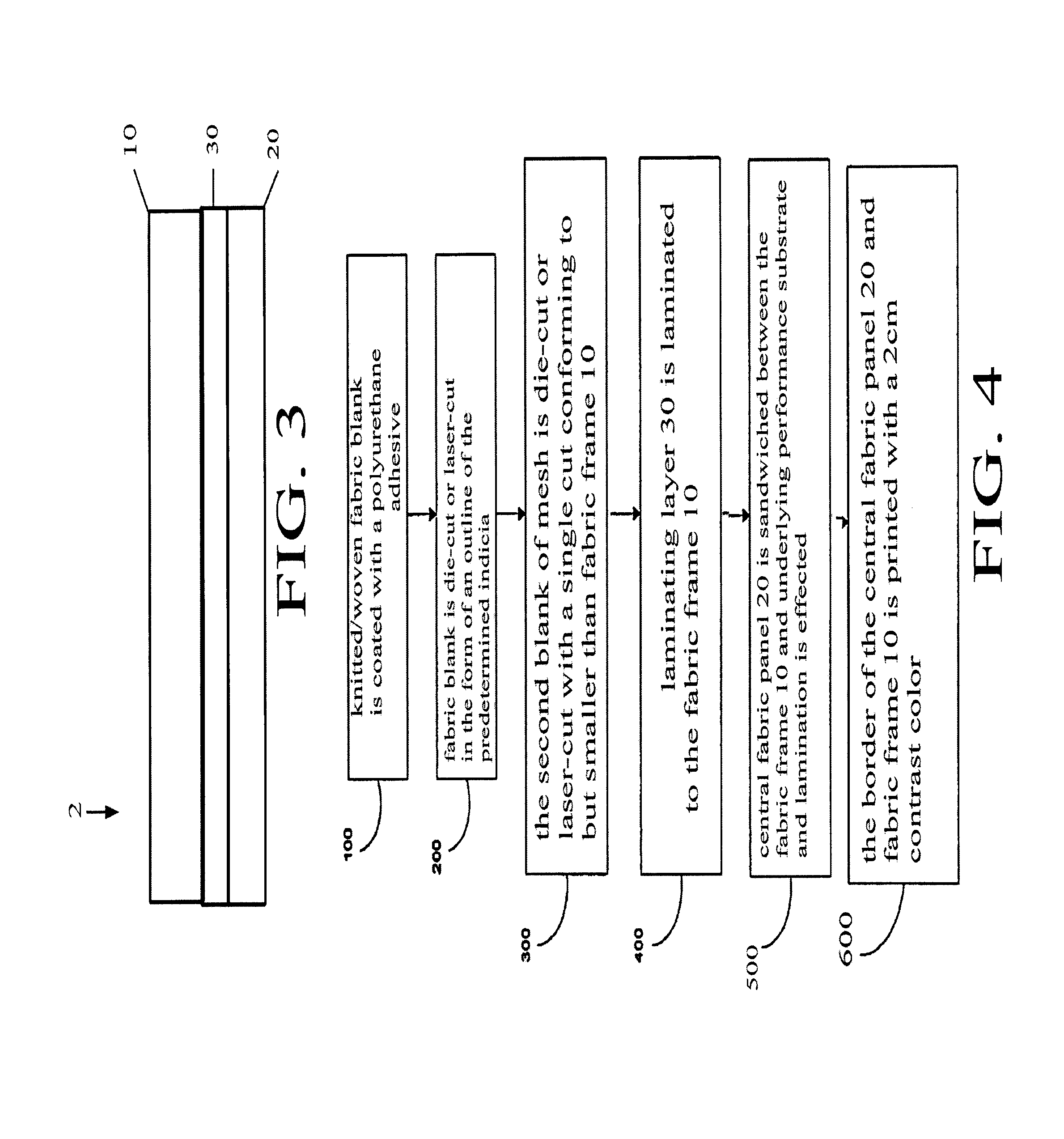Performance fabric appliqués
a technology of appliques and fabrics, applied in the field of heat activated transfer and appliques, can solve the problems of flat designs created by silk-screening, complex and time-consuming, and products that resist repeated stretching, and achieve the effects of reducing manufacturing costs, reducing manufacturing costs, and reducing production costs
- Summary
- Abstract
- Description
- Claims
- Application Information
AI Technical Summary
Benefits of technology
Problems solved by technology
Method used
Image
Examples
Embodiment Construction
[0025]The present invention is a light-weight breathable heat-transfer comprised of individual numbers, letters, logos, graphics, and other indicia. The transfer will not change or impede the physical characteristics of performance fabrics to which they are applied, including breathability, moisture-wicking characteristics, stretch and recovery, and launderability.
[0026]FIG. 1 is a front view of a heat-activated appliqué2 according to an embodiment of the present invention. The appliqué1 portrays a preselected numeric indicia (here a “5” in wide block script). FIG. 2 is a front composite view of the heat-activated appliqué2 of FIG. 1 and FIG. 3 is a side view.
[0027]The appliqué2 comprises a fabric frame 10 that is cut (die-cut, laser-cut, rotary-blade-cut, water-jet cut or otherwise suitably cut) from a first textile blank in the form of an outline of the predetermined indicia. The indicia may be any discrete text, number, logo, graphic, etc, hi general, the first blank is a knitted...
PUM
| Property | Measurement | Unit |
|---|---|---|
| thickness | aaaaa | aaaaa |
| width | aaaaa | aaaaa |
| width | aaaaa | aaaaa |
Abstract
Description
Claims
Application Information
 Login to View More
Login to View More - R&D
- Intellectual Property
- Life Sciences
- Materials
- Tech Scout
- Unparalleled Data Quality
- Higher Quality Content
- 60% Fewer Hallucinations
Browse by: Latest US Patents, China's latest patents, Technical Efficacy Thesaurus, Application Domain, Technology Topic, Popular Technical Reports.
© 2025 PatSnap. All rights reserved.Legal|Privacy policy|Modern Slavery Act Transparency Statement|Sitemap|About US| Contact US: help@patsnap.com



